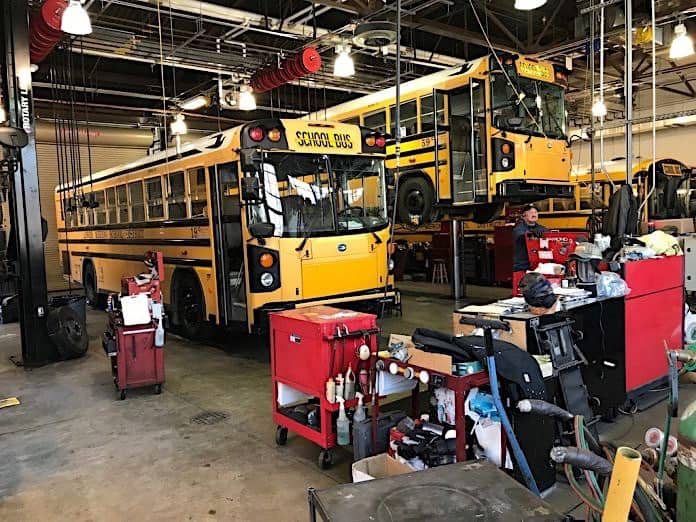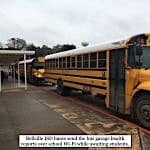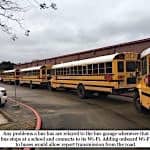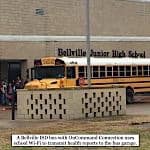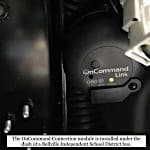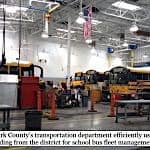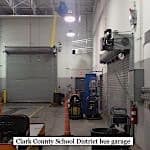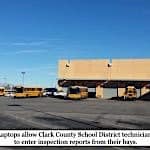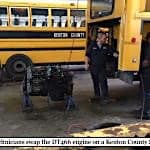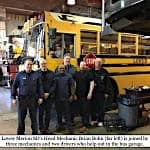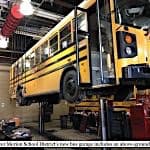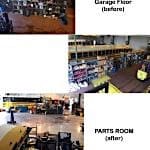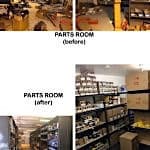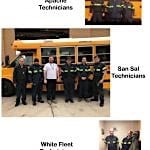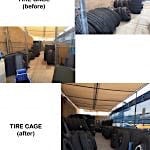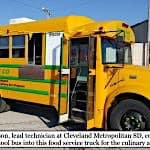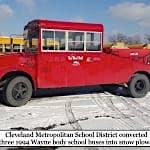Sometimes what student transportation operations need for sucess is a totally new bus garage. Other times, increased efficiency is a result of individuals rather than things.
Lower Merion School District in Pennsylvania took the first approach. It was already innovating in the late 1990s, when it began introducing CNG school buses into the fleet. “The original impetus was not just clean air considerations, but also the noise from the buses when they started in the morning,” said Transportation Supervisor Uldis Vilcins.
The district was aided by the Philadelphia Clean Cities Coalition (now known as the Eastern Pennsylvania Alliance for Clean Transportation), the U.S. Department of Energy’s Clean Cities program, and the IRS CNG fuel tax credit which expired in 2016.
“Over the years, the district has made every effort to make use of potential grant funds, towards station component improvements, and towards the additional, or incremental cost of a CNG bus over diesel,” Vilcins shared. “Even without the tax credit and with the price of (diesel) fuel down, the district continues to save money using CNG, decreasing emissions and supporting clean sustainable transportation efforts by both example and regional mentorship.”
Lower Merion now owns 65 CNG school buses that comprise the East Coast’s largest alternatively-fueled school bus fleet. As the transportation department searched for a bigger location to move to in the early 2000s, the most important consideration was having a bus garage that would allow efficient repair and maintenance of this fleet.
A building formerly used by an equipment supply company turned out to be a good starting point to build on. The heating system stayed but new halogen lighting and new bay doors were added.
To aid in servicing the CNG buses, a methane detector system complete with alarms was installed. “In the instance of a methane release, the system components have an electronic panel which then sends the alarm detection to the air handling system, which opens the bay doors automatically, and turns on the HVAC blower system to completely evacuate the air within the shop on a continuous basis,” explained Vilcins.
New equipment included a water-based (no solvent) parts cleaner, antifreeze recycling system to recycle used coolant, Arc & Mig welders, two tire machines to service 14″ to 22.5” tires, portable tailpipe ventilator, a Dell laptop for every mechanic, steam cleaner for cleaning engines and an air conditioner recycler to service AC systems on cars, trucks and buses. Carbon monoxide, smoke and natural gas detectors were added and connected to the central alarm system.
The new bus garage has diagnostic software and repair capability for parts from Chevrolet, Ford, Cummins, International, Allison transmissions, Bendix brakes, Meritor brakes and Parker coolant fans.
As all good transportation directors do, Vilcins is looking to the future and evaluating what technology is needed for efficiency. His wish list includes an electronic wheel balancer, Tig welder, plasma cutter and LED lighting.
While new equipment and technology was what Lower Merion needed, Scottsdale Unified School District in Arizona reached new heights through the efforts of one man, Fleet Supervisor Johnny Williams. Having previously contracted out their school bus maintenance, SUSD switched back to an in-house maintenance system in 2012, but chose not to replace the shop supervisor when he left in 2013.
“Once we transitioned to in-house maintenance we struggled greatly mainly for lack of an effective supervisor,” shared Barbra Sheppard, executive assistant to Transportation Director Jeffrey Cook. “It wasn’t until Johnny joined our staff that things took on a new light.”
“My first week at Scottsdale I spent getting information and a layout of the district and shop and what duties were assigned to which technicians,” Williams told STN. “It didn’t take long to realize we had lots of issues to work through.” These issues turned out to be related to both the shop and the employees.
Williams started by overseeing the cleaning and organization of the shop. Simple things like repainting the floors a lighter color, installing new lighting, building shelving and getting parts up off floors turned out to make a vital difference. “You could see it in the mechanics’ faces they were liking the changes and proud of where they were working,” Williams said.
The next project was the department’s workforce. Williams removed some employees, hired others and made sure they were trained correctly. “We had everyone working together instead of pointing fingers at each other,” he said. “We can now make better improvements with everyone on board and working well.”
Williams also observed the need for technology and made a wise purchase of diagnostics software. “Having the right crew and software we can perform most repairs ourselves to save money and insure the quality of work,” he noted.
Procedural changes were also implemented. Someone is now on-call in case a problem or breakdown is called in. Preventative maintenance records were computerized, and shop hours were changed to allow more repairs to be done in a day. A Zonar system was added so repair orders generate automatically based on electronic inspection reports instead of the much slower process of paper reporting.
Most importantly of all, Williams has perfected leadership by example. “I explained that I take tremendous pride in what I do and I demand nothing less of my coworkers and they all have really stepped up and performed,” he explained.
“He has an extraordinary relationship with his employees and empowers them to do their best work. It isn’t at all uncommon to see him fire up a BBQ and cook his staff lunch. He is a true role model and leader who has set a high bar for himself and who consistently goes above and beyond,” Sheppard said in appreciation.
Cook likewise echoed the praise for his fleet supervisor, commenting that he “could not be happier” with Williams’ work. “We have seen a drastic improvement in our breakdowns and dependability of the fleet as a whole,” he added. “All of this is directly related to the direction and hard work demonstrated by John.”
For his part, Williams is glad operations have turned around but recognizes the contributions of those around him. “We have a great team from dispatchers, routers, trainers, and supervisors and that is what makes a difference. I am so honored for this recommendation but if it wasn’t for the whole team at Scottsdale Unified School District I would be just another employee,” he said.
Editor’s Note: Read more about school transportation departments who are creatively meeting needs in their bus garages in the February issue of School Transportation News magazine.


